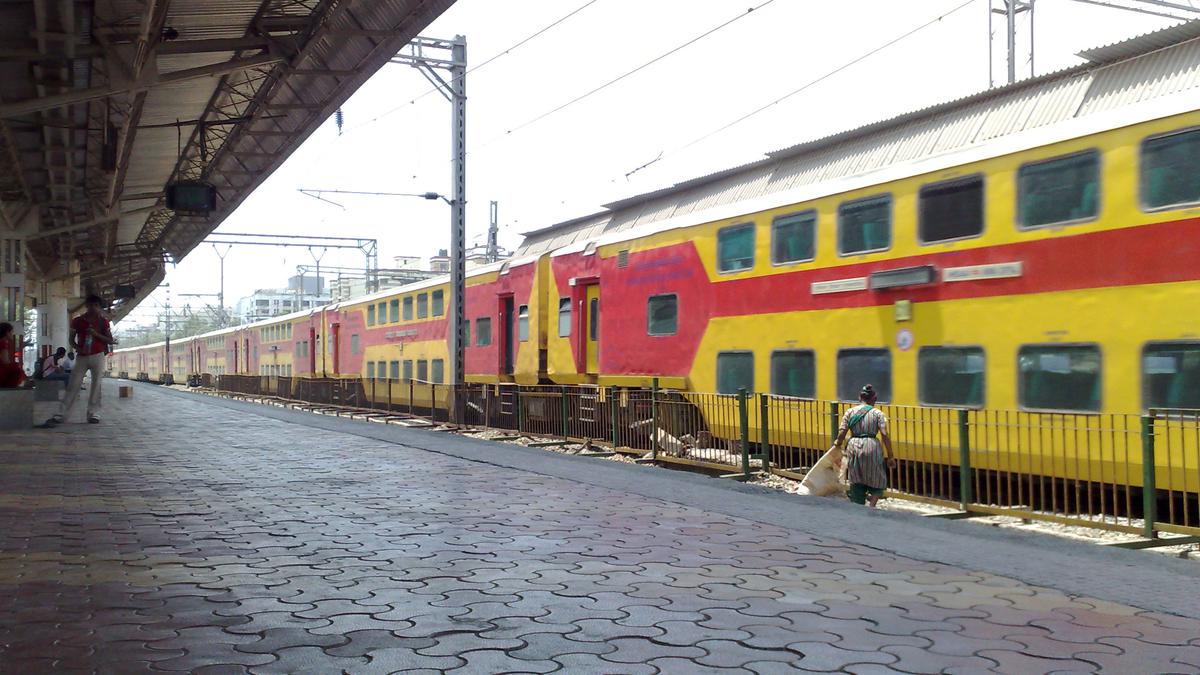
Evolution of the double decker
The Hindu
Evolution of the Double decker
Recently, I travelled from Mumbai to Ahmedabad on a double-decker train. The cosy seat on the upper deck reminded me of childhood journeys on the Pune-Mumbai Sinhagad Express. In 1978 this was the first train in India to have double-decker bogies. There were double-decker buses too that, as a child, I aspired to drive.
Interestingly, the first double decker were not trains or even buses but modified horse-drawn carriages of the 1820s. Open-air seats placed on the top, at half the regular fare, were reached by an outside ladder. Full-bodied double-decker buses, however, had taken over by the 1930s.
Double-decker trains began in the 1850s in France, when several trains got upper seats under a light roof and open sides. The first major innovation came in the 1860s with the first full-bodied two-storeyed carriage bottom kept lower for a low center of gravity. The carriages were 4.17 m high, with clear height of 1.65m in the lower section. Britain’s first full-fledged double-decker train made its maiden run in 1948. In India, while the Singhad Express had a few double-decker bogies, the first full double-decker train was the Mumbai-Surat Flying Ranee in 1979. Though double-decker coaches were added on other routes, the Railways took up the idea seriously only in 2011 by introducing fully air-conditioned double-decker trains on six intercity routes.
The Rail Coach Factory Kapurthala manufacturers stainless-steel AC double-decker coaches that can accommodate 120 passengers, increasing passenger capacity by 55%. Slightly narrower than regular coaches, space has been optimised by using the well space between bogies and power for lighting. Air-conditioning is supplied by two power cars, at both ends of the train in an end-on-end configuration.
At 4.366m, double deckers in India are just 20 cm higher than the 1860 model. This matches European double deckers that range from 4.3 to 4.63m. Effective height, when compared to regular coaches, is more because of the lower carriage bottom. The double-decker design has to take into consideration major constraints such as overhead structures, bridges, electric traction equipment, and so on.
Many years ago, while travelling in rural Rajasthan, I was intrigued to see people climb the ladder at the bus’ rear to sit among luggage on the roof. I did the same, thinking it would be a free ride. Once the bus started, the conductor managed to exit the moving bus from the back door, make it to the ladder, climb up, issue the tickets and get back inside before we hit the next stop. That, truly, was the best double-decker experience of my life. And the ticket? It cost the same.





















 Run 3 Space | Play Space Running Game
Run 3 Space | Play Space Running Game Traffic Jam 3D | Online Racing Game
Traffic Jam 3D | Online Racing Game Duck Hunt | Play Old Classic Game
Duck Hunt | Play Old Classic Game











